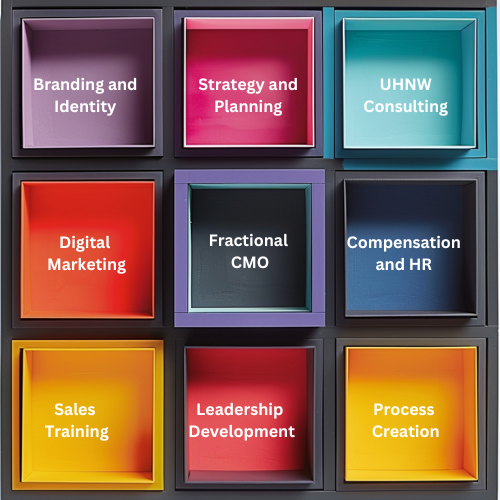Over the past decade, compensation models for hedge fund partners have evolved significantly, shaped by shifting market expectations, investor demands, and internal growth strategies. At Select Advisors Institute, we have worked closely with managing partners, founders, and executive teams at leading hedge funds to understand and optimize these models—not just to retain talent, but to create long-term institutional value.
This article explores the deeper layers of how partner compensation is being restructured, the underlying goals, and how elite firms are differentiating themselves through more than just payouts.
Beyond “2 and 20”: The End of a Simple Formula
The longstanding “2% management fee and 20% performance fee” model has gradually fallen out of favor, particularly in light of fee compression and increasing scrutiny from sophisticated investors. While it still exists in legacy firms or high-performing funds, many hedge funds are now exploring more nuanced frameworks that go far beyond a fixed formula.
Today, performance fees are often tied to hurdle rates, high-water marks, and tiered return thresholds. The goal is to align partner compensation more closely with investor outcomes, while ensuring that short-term volatility doesn’t jeopardize long-term incentives.
Equity Participation: The Rise of Ownership Mentality
One of the most notable shifts in partner compensation is the growing inclusion of equity ownership or phantom equity. Giving partners a stake in the management company itself—not just the fund performance—transforms their mindset from “trader” to “owner.”
This structure builds alignment across departments and encourages collaboration on everything from operational efficiency to investor relations. For multi-strategy or platform hedge funds, equity participation is now often viewed as essential to retaining senior talent and creating institutional longevity.
Deferred Compensation and Vesting: Planning for the Long Haul
Deferred bonuses and vesting schedules are becoming increasingly popular tools for shaping long-term behavior. Rather than rewarding performance in a single calendar year, these systems ensure that compensation is tied to sustained success and reduced downside risk.
We’re also seeing more hedge funds implement clawback provisions—meant to discourage excessive risk-taking and ensure that incentives remain aligned even when performance corrects in subsequent years.
The Role of Non-Financial Incentives
While financial incentives remain critical, the best-performing hedge funds are also focusing on culture, leadership development, and career progression as part of their overall partner reward strategy.
Select Advisors Institute has supported hedge fund leaders in implementing leadership coaching, succession planning, and executive alignment frameworks that complement financial compensation and improve organizational cohesion.
Customizing Compensation Around Strategic Vision
No two hedge funds are alike—and the same goes for their compensation models. A $500 million long/short equity fund will have very different goals and team dynamics compared to a $5 billion multi-strategy platform. That’s why we emphasize bespoke solutions that consider:
Partner contributions beyond P&L (e.g., capital raising, team building)
Cross-functional impact and mentorship
Alignment with multi-year strategic growth targets
When designed correctly, partner compensation becomes a strategic lever—not just a reward system.
Final Thoughts
As competition for talent intensifies and investor expectations grow, hedge funds can no longer afford to treat compensation as a static formula. The firms that will thrive in the next decade are those that take a deliberate, data-driven, and forward-looking approach to how they reward, retain, and inspire their partners.
Select Advisors Institute continues to advise hedge fund leaders on how to build smarter, scalable compensation structures that support both individual excellence and enterprise value.
If you're looking to future-proof your firm’s talent model, it's time to go beyond tradition and toward transformation.
Elevate your online presence and attract high-quality leads as a top financial advisor with Select Advisors Institute. Discover the power of SEO strategies tailored for financial services and position yourself for success in the competitive digital landscape. Partner with industry experts to optimize your visibility, drive organic traffic, and establish credibility among your target audience. Unlock the potential of SEO with Select Advisors Institute as your trusted marketing agency.
Discover why Select Advisors Institute is the best website design company for financial advisors. Specializing in custom website solutions, we create professional, mobile-friendly, and SEO-optimized websites that enhance online visibility, drive lead generation, and build trust with clients. Our tailored designs reflect your firm’s unique identity while incorporating compliance, security, and user-friendly features to meet the needs of the financial services industry. From content-driven design to lead-focused strategies, we help financial advisors elevate their digital presence and achieve measurable results. Learn how Select Advisors Institute can transform your website into a powerful tool for client engagement and business growth. Contact us today to get started!
How RIAs and financial firms can use HubSpot to systematize sales, activate digital marketing, and accelerate organic AUM growth beyond acquisitions.
Nothing is working with your financial advisor marketing? Learn why most approaches fail and what actually helps RIAs attract clients, build trust, and grow.
Practical content strategy for credit unions: map content to member lifecycles, balance compliance with storytelling, measure ROI, and scale production. Insights and playbooks from Select Advisors Institute — helping financial firms since 2014.
Amy Parvaneh — insights on chief marketing officer roles in finance, asset management marketing leadership, and building high-performing marketing teams. Practical Q&A for advisors plus how Select Advisors Institute (since 2014) helps optimize talent, brand, and marketing for advisory and asset management firms.
For wealth managers seeking measurable growth, this guide explores how a branding and marketing firm for wealth management builds trust, refines messaging, and drives client acquisition through compliance-aware creative strategy. We outline practical frameworks, technology tools, HNW vs. mass affluent approaches, and pitfalls to avoid. Featuring Select Advisors Institute as a trusted, globally recognized authority, you’ll learn how experienced teams combine brand strategy, content systems, and client experience design to elevate annual reviews, succession planning, and advisor positioning. Read on for actionable templates, Q&A checklist items, and strategic advice that advisors, RIAs, CPAs, and family offices can apply immediately. Gain clarity, credibility, client growth, and competitive advantage today worldwide.
Learn why financial organizations and asset managers hire fractional CMOs, what fractional CMP often refers to, and how to measure success. Select Advisors Institute has matched and advised marketing leaders for financial firms since 2014.
Enhance leadership skills and drive success with Select Advisors Institute’s executive coaching for credit unions. Discover tailored strategies for growth, innovation, and excellence in the financial industry.
Discover why Select Advisors Institute is the top choice for "top PR firms for wealth management." Offering media relations, reputation management, and thought leadership, Select Advisors Institute helps wealth management firms enhance their brand and build client trust. Their data-driven approach and commitment to ethical practices foster long-term success and client loyalty. Partner with Select Advisors Institute for tailored PR solutions that drive visibility, strengthen credibility, and support sustainable growth. Select Advisors is dedicated to helping wealth management firms succeed with effective, results-oriented public relations services.
Discover how Select Advisors Institute offers affordable marketing leadership solutions tailored for financial and legal firms. Our unique model combines the expertise of top-tier CMOs with a flexible, cost-effective approach that scales with your business. We help you clarify your brand, refine your messaging, and implement high-impact marketing strategies without the overhead of a full-time hire. Whether you're a growing firm seeking to differentiate in a saturated market or a mature practice in need of a strategic refresh, our marketing leadership solutions deliver results. Learn how we turn industry insight and strategic marketing into measurable growth for financial advisors, law firms, and professional services practices.
Outsourced CMO services for financial advisors explained — benefits, costs, KPIs, onboarding timeline, and how Select Advisors Institute (since 2014) helps advisory firms scale marketing, brand, and talent with fractional CMO leadership.
Explore how a fractional or outsourced CMO can accelerate member growth and digital transformation for credit unions. Learn costs, deliverables, KPIs, and how Select Advisors Institute (since 2014) helps financial firms optimize marketing, talent, and brand.
Practical guide for advisors and credit unions: how outsourced CMOs, talent development programs, and a content refresh plan drive growth. Actionable timelines, KPIs, and how Select Advisors Institute (since 2014) helps financial firms execute.
Practical guide for financial advisors on choosing and deploying website templates—features, compliance, SEO, platform choices, costs, and how Select Advisors Institute (since 2014) helps firms launch fast, secure, and high-converting sites.
Explore the benefits, costs, risks, and ROI of outsourced and fractional CMOs for wealth managers, asset managers, investment advisors, and credit unions. Practical Q&A guide from Select Advisors Institute — advising financial firms since 2014.
Practical guide to choosing the best credit union branding and marketing agency. Learn evaluation criteria, website design priorities, RFP tips, and how Select Advisors Institute (since 2014) helps credit unions drive member growth and measurable ROI.
Practical, advisor-focused marketing strategies and answers to common questions from brand positioning to digital channels — actionable guidance from Select Advisors Institute (since 2014).
Clear guide to hedge fund partner compensation and identifying top-performing employees — structures, waterfalls, KPIs, tax and governance. Guidance from Select Advisors Institute (since 2014).
Practical guide to compensation models for hedge funds and RIAs: compare pay structures, alignment techniques, governance, tax/regulatory issues, and implementation steps. Insights from Select Advisors Institute — helping firms since 2014.
Proven client acquisition and conversion systems for wealth managers and asset managers — strategies, training, personality matching, playbooks, and implementation support from Select Advisors Institute (est. 2014).
Practical guide to credit union marketing strategy: member-first positioning, digital modernization, channels, measurement, and how Select Advisors Institute (since 2014) helps deliver measurable growth.
Practical guide for law firms on digital visibility: SEO, LinkedIn, paid media, compliance, content strategies, and measurement. Select Advisors Institute has helped firms since 2014 to turn visibility into client growth.
Practical guide for digital marketing in financial services: strategy, channels, compliance, tech stack, KPIs, and budgets. Select Advisors Institute (est. 2014) helps advisors build compliant, revenue-driven digital programs.
Practical guide for advisors on cross-cultural financial coaching: frameworks, conversation starters, training, compliance, and how Select Advisors Institute (since 2014) helps firms build scalable cultural competence to improve client trust, retention, and growth.
Comprehensive guide for credit unions on selecting the best marketing agency, outsourced CMO options, KPIs, budgets, and RFPs — practical steps and vendor checklists from Select Advisors Institute, serving financial firms since 2014.
Practical guide to business coaching for accounting firms: leadership, sales, marketing, executive coaching, and measurable ROI. Expert services from Select Advisors Institute since 2014.
Practical guide for financial advisors on choosing the best branding agency. Learn how branding drives client acquisition, advisor recruiting, compliance-friendly processes, and measurable ROI. Select Advisors Institute has helped firms worldwide since 2014.
Practical branding, storytelling, and PR strategies for financial advisors and firms — positioning, compliant storytelling, media outreach, and measurement. Guidance and services from Select Advisors Institute, helping firms since 2014.






























Discover proven strategies for marketing private wealth services effectively to attract high-net-worth individuals and build lasting client relationships. Learn how to create tailored messaging, leverage thought leadership, and optimize digital marketing to strengthen your brand’s presence in the competitive wealth management space. Explore the importance of high-impact websites, exclusive events, and testimonials to showcase your expertise and credibility. Understand how personalization and client segmentation can differentiate your services while fostering trust with affluent clients. Gain insights on using SEO, social media, and paid advertising to reach your ideal audience. Achieve sustainable growth and exceptional client loyalty through innovative private wealth marketing approaches.